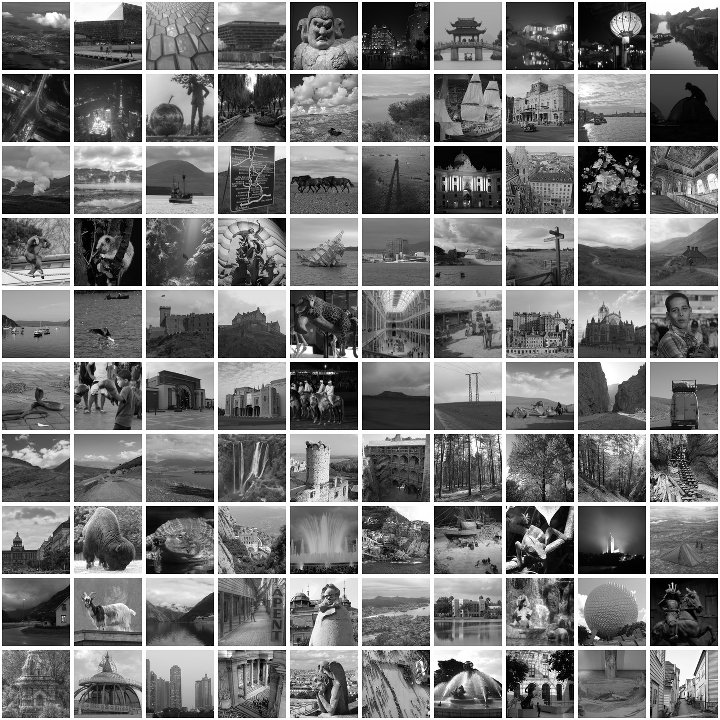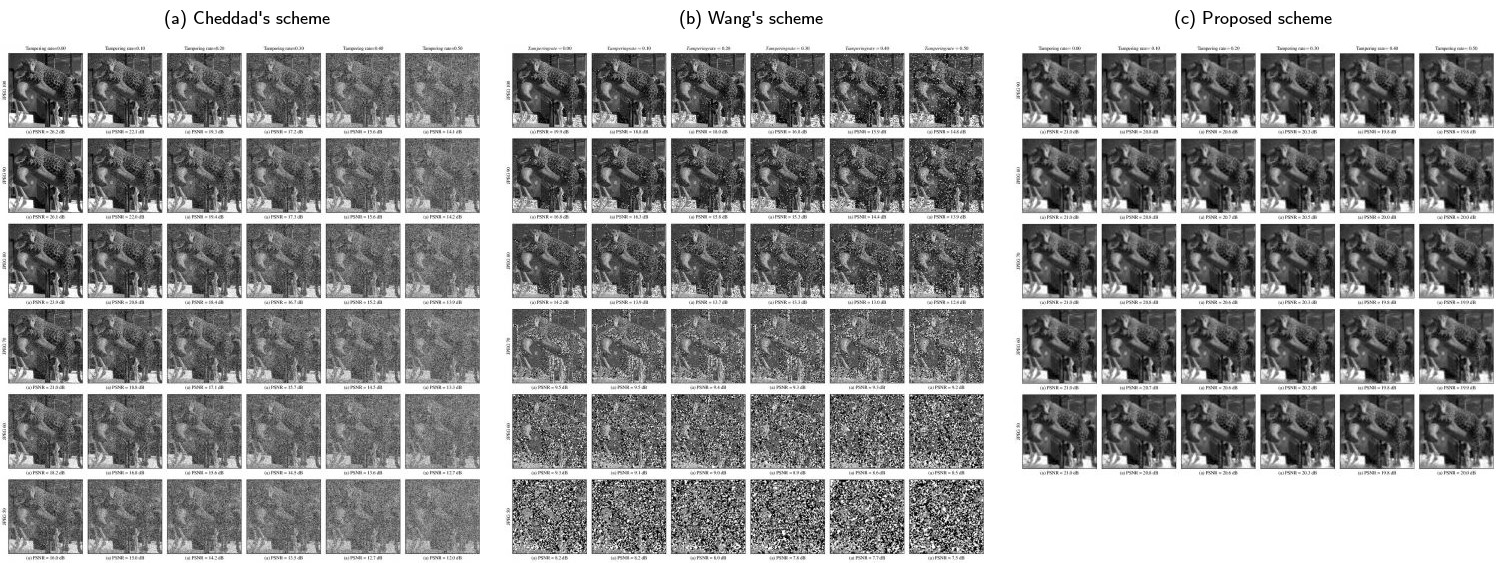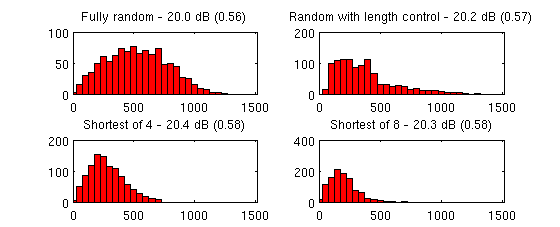Iterative Filtering for Semi-Fragile Self-Recovery
Paweł Korus, Jarosław Białas, and Andrzej Dziech
IEEE International Workshop on Information Forensics and Security, 2014
2014-wifs-se.pdf (5 MB)
https://github.com/pkorus/iterative-self-recovery
Abstract
In this paper we propose a novel scheme for semi-fragile self-recovery based on iterative filtering of randomly sampled image sections. The scheme exhibits very good robustness against both malicious tampering and lossy JPEG compression with only slight deterioration of the reconstruction quality with attack strength. We describe the operation of the proposed scheme and present the results of its experimental evaluation. We also compare our approach with two state-of-the-art alternatives described in the literature.
Copyright
Copyright © 2014 IEEE. Personal use of this material is permitted. However, permission to use this material for any other purposes must be obtained from the IEEE by sending a request to pubs-permissions@ieee.org.
Test Images
The experiments in this paper were performed on a test set of 100 images. The images are grayscale JPEGs of size 1024x1024 px (1 Mpx) - cropped and subsampled fragments of digital photographs. The images were selected to span a wide range of content characteristics, both in terms of brightness and texture levels. (see thumbnails below).

This work is licensed under a Creative Commons Attribution 4.0 International License.
The data set can be obtained here: wifs-2014-testset.zip (55 MB)
Robustness Evaluation
The robustness evaluation grids show the reconstruction quality for various combinations of tampering rates (up to 50% of the image area) and JPEG compression factors (down to 50). In the performed experiments we compared three schemes:
- A. Cheddad, A. Condell, K. Curran, and P. Mc Kevitt, A secureand improved self-embedding algorithm to combat digital documentforgery, Signal Processing, vol. 89, pp. 2324–2332, 2009.
- H. Wang, A. T. S. Ho, and X. Zhao, A novel fast self-restoration semi-fragile watermarking algorithm for image content authentication resistantto jpeg compression, in Proc. 10th Int. Conf. on Digital-Forensics andWatermarking, 2012.
- The proposed scheme based on iterative filtering.
An example set of reconstruction thumbnails is show below. Full-resolution evaluations grids are available for download: wifs-robustness-grids.zip (64 MB).

Impact of Line Selection Strategies
In the manuscript, we remarked that is possible to fine-tune the operation of the proposed scheme by changing the profile selection strategy. In the paper, we've used a fully random strategy where both (x,y) coordinates for line start and end points are drawn independently (from a uniform distribution). Here, we briefly show what is the impact of adopting a different strategy. We considered:
- fully random strategy,
- random strategy with line length control,
- shortest of 4 random lines,
- shortest of 8 random lines.
The average improvement of reconstruction quality (5 independent repetitions for 100 images) is 0.4 dB. While the objective quality score improvement is not particularly impressive, enhancement of the selection strategy tends to have a visible impact on the character of the distortions - notice in the example below better representation of image details and less distinct artifacts in solid image regions.

The distribution of line lengths for the considered strategies is shown below:

The most visually pleasing result (subjectively speaking) was obtained when the shortest of 4 random lines was selected. The results might be different for other configurations of the scheme (e.g., different precision of profile descriptors, different number of drawn lines).
Demonstration Tool
This package contains a Matlab implementation with a simple graphical user interface (see demo.m). This demonstration is a simple illustration of the general principles - it is not suitable for production use. We have a more suitable, low-level implementation in C++. Please get in touch if you are interested.
